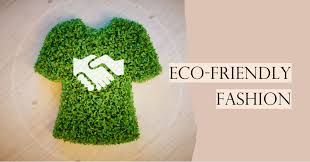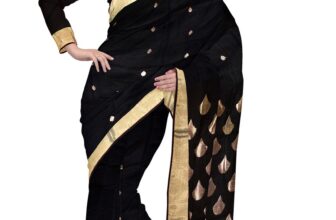
The saree, a quintessential symbol of Indian heritage, has transcended centuries of fashion, remaining timeless and versatile. As the world becomes increasingly conscious of environmental impact, the fashion industry is experiencing a shift towards sustainability. The saree, with its rich history and cultural significance, is no exception. Embracing eco-friendly fabrics and ethical fashion choices can ensure that this traditional attire continues to be celebrated while reducing its environmental footprint. This blog explores how sarees can be part of a sustainable wardrobe, focusing on eco-friendly fabrics and ethical fashion practices.
The Environmental Impact of Conventional Saree Production
Traditional sarees are often made from synthetic materials such as polyester, nylon, or blended fabrics, which contribute to pollution and resource depletion. The production of these materials involves energy-intensive processes and the use of harmful chemicals, leading to water contamination and increased carbon emissions. Additionally, synthetic fabrics are non-biodegradable, contributing to landfill waste and environmental degradation.
Moreover, the dyeing and finishing processes in saree production can involve toxic chemicals that harm both the environment and workers. These chemicals can seep into water bodies, affecting aquatic life and local communities. As awareness grows about the environmental impact of fashion, many consumers are seeking alternatives that align with their values.
Eco-Friendly Fabrics for Sustainable Sarees
Choosing eco-friendly fabrics is a significant step towards sustainable saree fashion. These fabrics are made from natural, renewable resources and are produced using environmentally friendly methods. Here are some popular eco-friendly fabrics that are ideal for sustainable sarees:
Organic Cotton: Organic cotton is grown without synthetic pesticides or fertilizers, making it a more sustainable option compared to conventional cotton. It requires less water and supports biodiversity by promoting healthier soil. Sarees made from organic cotton are breathable, comfortable, and biodegradable.
Bamboo Fabric: Bamboo is a fast-growing, renewable resource that requires minimal water and no pesticides. Bamboo fabric is soft, durable, and has natural anti-bacterial properties. It is also biodegradable, making it an eco-friendly choice for sarees.
Tencel (Lyocell): Tencel is a sustainable fabric made from wood pulp, usually sourced from eucalyptus, beech, or spruce trees. The production process is closed-loop, meaning that almost all solvents and water used are recycled. Tencel is soft, breathable, and biodegradable, making it a popular choice for eco-friendly sarees.
Ahimsa Silk: Also known as “peace silk,” Ahimsa silk is produced without harming silkworms. Unlike traditional silk production, where silkworms are boiled alive, Ahimsa silk allows the moths to complete their life cycle naturally. This ethical approach results in a luxurious, cruelty-free fabric that is ideal for sustainable sarees.
Hemp Fabric: Hemp is a highly sustainable crop that grows quickly without the need for pesticides or excessive water. Hemp fabric is strong, durable, and biodegradable. Sarees made from hemp have a unique texture and drape beautifully, making them a fashionable and eco-friendly choice.
Linen: Made from the flax plant, linen is a natural, biodegradable fabric that requires minimal water and pesticides. Linen sarees are known for their durability, breathability, and elegant drape. Although linen has a slightly higher environmental impact than some other natural fibers, it is still considered a sustainable option due to its long lifespan and biodegradability.
Recycled Fabrics: Some sarees are now being made from recycled materials, such as reclaimed silk, cotton, or synthetic fibers. Recycling reduces the demand for virgin materials, minimizes waste, and lessens the environmental impact of fabric production. Recycled sarees often have a unique, one-of-a-kind look, adding a creative and sustainable element to your wardrobe.
Ethical Fashion Choices in Saree Production
In addition to choosing eco-friendly fabrics, supporting ethical fashion practices is crucial for a truly sustainable saree wardrobe. Ethical fashion focuses on fair treatment of workers, transparent supply chains, and environmentally responsible production methods. Here’s how you can make ethical fashion choices when it comes to sarees:
Fair Trade Sarees: Fair trade ensures that artisans and workers are paid fair wages and work in safe conditions. By purchasing fair trade sarees, you support the livelihoods of the people who craft these beautiful garments. Look for fair trade certifications or buy from brands and cooperatives that are committed to ethical practices.
Handloom Sarees: Handloom weaving is a traditional craft that supports local artisans and preserves cultural heritage. Handloom sarees are made using manual looms, which require less energy and produce minimal waste. By choosing handloom sarees, you not only reduce your environmental impact but also support the artisans who keep this craft alive.
Support Local Artisans: Buying directly from local artisans or small-scale producers helps ensure that more of the profits go to the makers themselves. This practice fosters economic empowerment and helps sustain traditional crafts. Many local artisans use natural dyes and sustainable practices, making their sarees a responsible fashion choice.
Transparent Supply Chains: Brands that maintain transparent supply chains provide information about where and how their sarees are made. This transparency allows consumers to make informed choices and ensures that ethical practices are followed at every stage of production. Look for brands that are open about their sourcing, production methods, and labor practices.
Slow Fashion: The slow fashion movement encourages consumers to buy less and choose high-quality, durable garments that will last for years. By investing in timeless sarees made from sustainable fabrics, you can reduce the need for frequent purchases and contribute to a more sustainable fashion industry.
Upcycled and Repurposed Sarees: Upcycling involves taking old or unused sarees and transforming them into new garments or accessories. This creative approach reduces waste and gives new life to fabrics that might otherwise be discarded. You can also repurpose your sarees into dresses, skirts, or home decor items, extending their lifespan and reducing their environmental impact.
Styling and Caring for Sustainable Sarees
Once you’ve invested in eco-friendly and ethically produced sarees, it’s important to care for them properly to ensure they last for years. Here are some tips for styling and maintaining your sustainable sarees:
Styling: Sustainable sarees are versatile and can be styled in various ways to suit different occasions. Pair them with handcrafted jewelry, made from sustainable materials like wood, bamboo, or recycled metals, to complete your eco-friendly look. Choose blouses made from natural fabrics or upcycled materials to further enhance your sustainable fashion statement.
Caring: To prolong the life of your sustainable sarees, follow these care tips:
Gentle Washing: Hand wash your sarees in cold water using a mild, eco-friendly detergent. Avoid harsh chemicals that can damage the fabric and the environment.
Air Drying: Air dry your sarees in the shade to prevent fading and reduce energy consumption. Avoid using a dryer, as it can weaken the fabric fibers.
Proper Storage: Store your sarees in a cool, dry place, preferably in cotton or muslin bags. Avoid plastic bags, as they can trap moisture and cause mildew.
Sarees are more than just garments; they are a symbol of cultural heritage and timeless beauty. By choosing eco-friendly fabrics and supporting ethical fashion practices, you can enjoy the elegance of sarees while minimizing your environmental impact. Embrace sustainability in your wardrobe, and let your saree collection reflect your commitment to a better, more responsible world.






